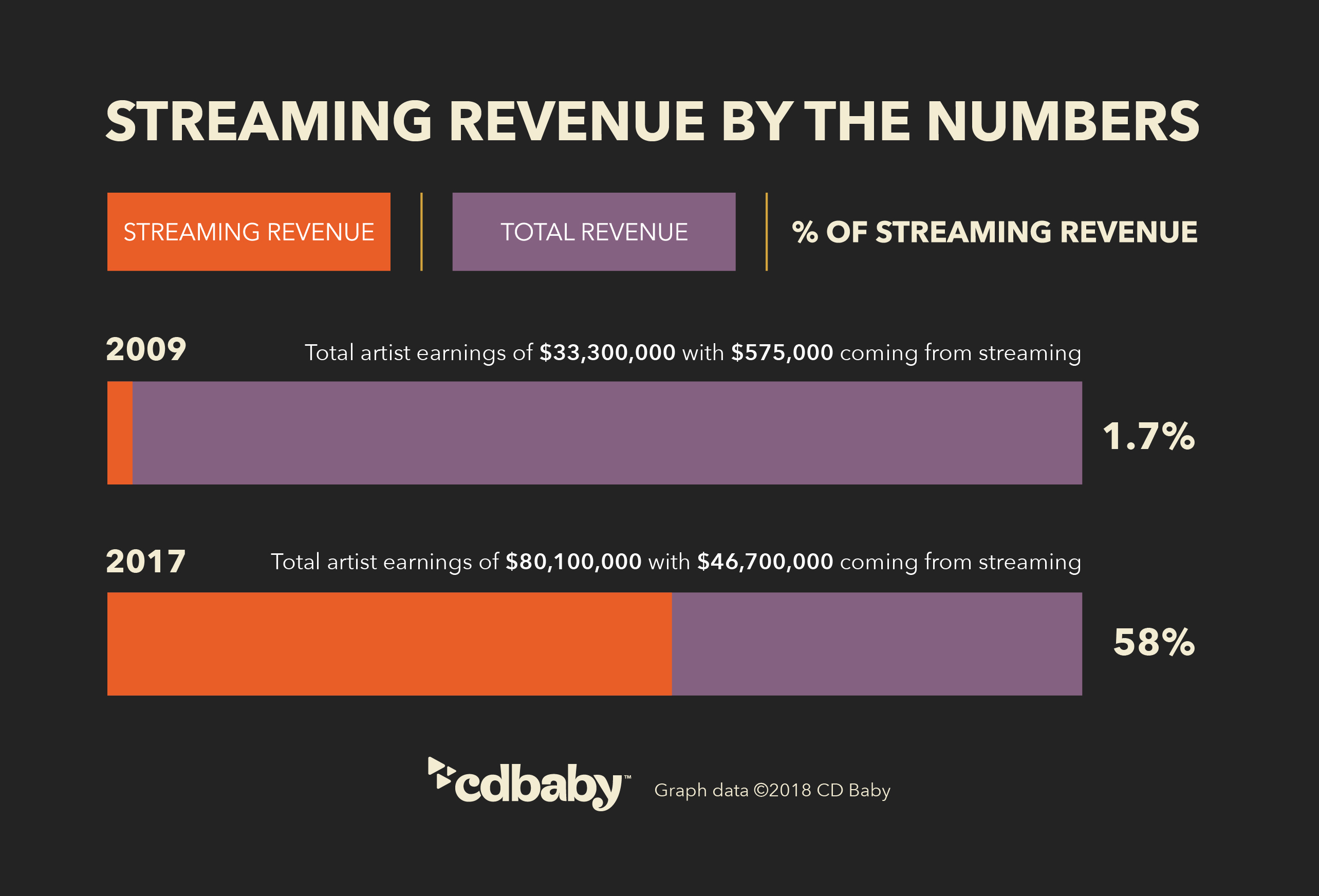20 stories of creative musical independence, Pt. 1: John Sifuentes
3 ways to make big moves in a small music town.
2018 marks CD Baby’s 20th anniversary, and I wanted to take some time this year to highlight twenty stories of creative DIY music-making. Not necessarily artists who’ve become famous, or conquered their genre, or made boat-loads of cash (we’ve featured plenty of those artists before), but people who are trying new things, tapping into new audiences, and finding new sources of music income.
I think readers of this blog can often gain as much by reading about an artist that figured out how to sell a few extra CDs as they can from an artist who’s “made it.” Scale-able wisdom, I like to call it: concepts that are worth remembering no matter where you — or the artist sharing the lesson — are at career-wise.
So first up in this series, we’ll look at three different ways John “Gage” Sifuentes turned his independence into an advantage.
Double your audience with an acoustic set
Being a DIY Musician in a small town means you have to do things differently. Before John Sifuentes got signed to a record label, he worked all the angles. The only problem was that in a small town there were no angles to work. He’d played all the bars, and his metal band could only play in those venues every so often. So John took the challenge and turned it upside down. He knew the other local “venues” — restaurants — wouldn’t go for his metal sound. But he convinced a local restaurant to let them do an acoustic metal show.
They played acoustic until nightfall then broke out the electric instruments. The bass player had a wireless amp so he set up in the median of the highway and played from there. People that wouldn’t have normally listened to metal ended up staying past dark. And vice versa. The fans of the heavier stuff enjoyed the earlier set. A new audience was found and a lot of albums were sold that night.
He realized that by having an acoustic and electric show he more than doubled his opportunities to play live and connect with potential fans. It’s a lesson he’s never forgotten. The second lesson learned that night was about the role of serendipity and reaching audience members that never would have found you otherwise.
Attract fans by playing in unexpected places
We spend so much time looking to replicate what other bands have done, trying to show we are part of a genre or scene. On the one hand, that can be useful so you get a “if-you-like-that-band-you-
But what if you want fans that have never even heard of your style of music? Put yourself in places where people can stumble onto you. That could be the street, online, or in a parking lot. You can wait for someone to put you on stage, or you can call your immediate surroundings your stage. For John, that restaurant gig became an unlikely stage where he brought together two different audiences.
Eventually John succeeded in the way a lot of indie artists dream about: he got a label deal. Guess what happened next? The label went bankrupt and John struggled to get paid.
As an indie artist, he went back to what worked for him. He released two versions of his next album: an acoustic one and a harder version. He now had two repertoires for live performance, and had two albums to sell at shows depending on the taste of his fans.
John operates with more freedom than he’d have if still signed to a label. As band members moved on — with kids and jobs — John turned inward and brushed up on his studio chops. He doesn’t make excuses or wait for other people to follow his pursuit. He picks up more instruments, and learns how to mix and master his own albums.
Serialize your content!
John’s day-job sent him to Israel for a couple of months where he was exposed to the area’s vast cultural strife. He returned feeling like the world is crazy, full of bigotry and racism. He thought, “I need to throw a pebble in the opposite direction. Do something.”
He decided to releases a song every month inspired by a different culture or religion. He does research and then incorporates what he’s learned into the song. Instead of a cultural facsimile, he creates something entirely new.
The project is called Unto the Wolves, and John hopes it can create empathy and educate people about how there’s much to be gained in our differences. He now has an episodic theme to explore month after month, a story that fans can follow along with, and he’s generating $300/month from micro-patrons who want to hear his next song, listen to the commentary, and watch the videos. Once John reaches twelve songs he plans to compile the tracks for a full album release.















